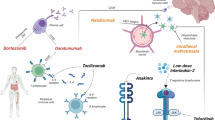Abstract
The objective of the study was to identify differences in treatment strategies for anti-NMDA receptor encephalitis based on specialty of treating physicians, geographic location, and years in practice. We conducted an anonymous worldwide electronic survey through the Practice Current section of Neurology® Clinical Practice to appraise differences in decisions about first- and second-line treatment and timing for initiation of second-line treatment for anti-NMDA receptor encephalitis. 399 participants answered all questions of the survey and were included in the analysis. 261 (65%) were adult neurologists, 86 (22%) were neurologists treating children, and 52 (13%) were pediatric rheumatologists. 179 (45%) responders practiced in the US. The majority agreed on the use of steroids and/or IVIg for first-line therapy and rituximab alone as second line. Differences in initial treatment regimen based on specialty included increased use of plasma exchange by adult neurologists (27%) and rituximab by pediatric rheumatologists (29%) (χ 2(4) = 27.43, p < 0.001). Trainees opted for plasma exchange (35%) and junior faculty picked rituximab (15%) more as part of first line (χ 2(4) = 13.37, p = 0.010). There was greater usage of anti-metabolites for second-line therapy outside of the US (15%) (χ 2(4) = 11.67, p = 0.020). US physicians also utilized second-line treatment earlier than their mostly European counterparts (14 vs. 23% used later than 2 weeks; χ 2(1) = 4.96, p = 0.026). Although treatment patterns were similar, differences observed across specialties and geographic locations may guide the development of consensus-driven guidelines by multi-disciplinary task forces. These guidelines may promote treatment trials of immunomodulators in autoimmune encephalitides.



Similar content being viewed by others
References
Granerod J, Ambrose HE, Davies NWS, Clewley JP, Walsh AL, Morgan D et al (2010) Causes of encephalitis and differences in their clinical presentations in England: a multicentre, population-based prospective study. Lancet Infect Dis 10:835–844
Vitaliani R, Mason W, Ances B, Zwerdling T, Jiang Z, Dalmau J (2005) Paraneoplastic encephalitis, psychiatric symptoms, and hypoventilation in ovarian teratoma. Ann Neurol 58:594–604
Dalmau J, Tuzun E, Wu HY, Masjuan J, Rossi JE, Voloschin A et al (2007) Paraneoplastic anti-N-methyl-d-aspartate receptor encephalitis associated with ovarian teratoma. Ann Neurol 61:25–36
Dalmau J, Gleichman AJ, Hughes EG, Rossi JE, Peng X, Lai M et al (2008) Anti-NMDA receptor encephalitis: case series and analysis of the effects of antibodies. Lancet Neurol 7:1091–1098
Titulaer MJ, McCracken L, Gabilondo I, Armangué T, Glaser C, Iizuka T et al (2013) Treatment and prognostic factors for long-term outcome in patients with anti-NMDA receptor encephalitis: an observational cohort study. Lancet Neurol 12:157–165
Gronseth GS, Woodroffe LM, Getchius TS (2011) Clinical practice guideline process manual. American Academy of Neurology, St. Paul
Bartolini L (2016) Practice current: how do you treat anti-NMDA receptor encephalitis? Neurol Clin Pract 6:69–72
Irani SR, Bera K, Waters P, Zuliani L, Maxwell S, Zandi MS et al (2010) N-methyl-d-aspartate antibody encephalitis: temporal progression of clinical and paraclinical observations in a predominantly non-paraneoplastic disorder of both sexes. Brain 133:1655–1667
Practice current. http://cp.neurology.org/site/misc/practice_current.xhtml. Accessed 12 Dec 2016
Talan J (2016) When guidelines aren’t available, how do you treat…?: neurology turns to clinical practice surveys. Neurol Today 16(4):33–34
Gastaldi M, Thouin A, Vincent A (2016) Antibody-mediated autoimmune encephalopathies and immunotherapies. Neurotherapeutics 13:147–162
Martinez-Hernandez E, Horvath J, Shiloh-Malawsky Y, Sangha N, Martinez-Lage M, Dalmau J (2011) Analysis of complement and plasma cells in the brain of patients with anti-NMDAR encephalitis. Neurology 77:589–593
Rath E, Zwerina J, Oppl B, Nell-Duxneuner V (2015) Efficacy and safety of rituximab in rheumatic diseases. Wien Med Wochenschr 165:28–35
Tambralli A, Beukelman T, Cron RQ, Stoll ML (2015) Safety and efficacy of rituximab in childhood-onset systemic lupus erythematosus and other rheumatic diseases. J Rheumatol 42:541–546
Kosmidis ML, Dalakas MC (2010) Practical considerations on the use of rituximab in autoimmune neurological disorders. Ther Adv Neurol Disord 3:93–105
Brummaier T, Pohanka E, Studnicka-Benke A, Pieringer H (2013) Using cyclophosphamide in inflammatory rheumatic diseases. Eur J Intern Med 24:590–596
Meuwissen SG, Ewe K, Gassull MA, Geboes K, Jewell D, Pallone F et al (2000) IOIBD questionnaire on the clinical use of azathioprine, 6-mercaptopurine, cyclosporin A and methotrexate in the treatment of inflammatory bowel diseases. Eur J Gastroenterol Hepatol 12:13–18
Kurian M, Fluss J, Korff C (2012) Anti-NMDA receptor encephalitis: the importance of early diagnosis and aggressive immunotherapy in tumor negative pediatric patients. Eur J Paediatr Neurol 16:764–765
Friedman CP, Gatti GG, Franz TM, Murphy GC, Wolf FM, Heckerling PS et al (2005) Do physicians know when their diagnoses are correct? Implications for decision support and error reduction. J Gen Intern Med 20:334–339
Moulton CA, Regehr G, Mylopoulos M, MacRae HM (2007) Slowing down when you should: a new model of expert judgment. Acad Med 82:S109–S116
Fricker RD (2012) Sampling Methods for Web and E-mail Surveys. In: Fielding N, Lee RM, Blank G (eds) The SAGE handbook of online research methods. SAGE Publications, London
Acknowledgements
The authors would like to thank the managing editor of Neurology Clinical Practice, Mrs. Sharon Quimby, for her contribution to the creation of the electronic survey.
Author information
Authors and Affiliations
Corresponding author
Ethics declarations
Ethical standards
The present study was certified as research exempt from IRB review by Children’s National Health System Institutional Review Board Committee in accordance with article 45 CFR 46.101(b)—Category 2 (Research involving the use of educational tests, survey procedures, interview procedures or observation of public behavior). The manuscript does not contain clinical studies or patient data.
Conflicts of interest
The authors declare that they have no conflict of interest.
Electronic supplementary material
Below is the link to the electronic supplementary material.
Rights and permissions
About this article
Cite this article
Bartolini, L., Muscal, E. Differences in treatment of anti-NMDA receptor encephalitis: results of a worldwide survey. J Neurol 264, 647–653 (2017). https://doi.org/10.1007/s00415-017-8407-1
Received:
Revised:
Accepted:
Published:
Issue Date:
DOI: https://doi.org/10.1007/s00415-017-8407-1




